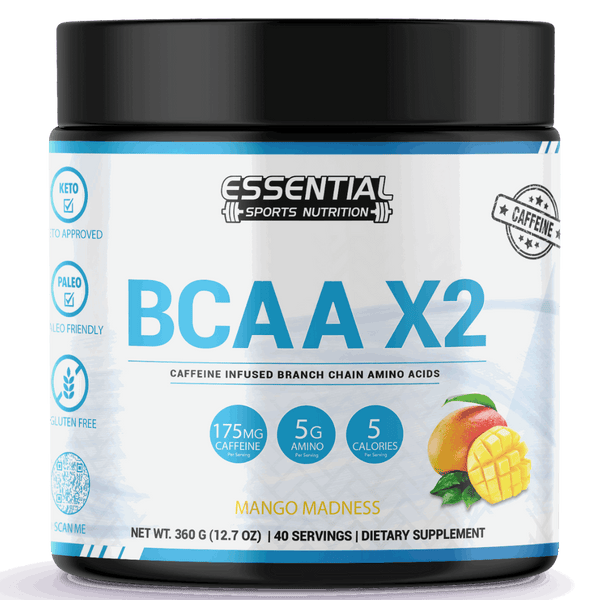Understanding the Key Differences Between the Keto Diet and Atkins Diet
You're comparing Atkins and Keto, both aiming for low-carb intake but with key differences. Atkins starts with a strict low-carb phase, gradually allowing more carbs for a sustainable lifestyle; it's more flexible with protein. On the other hand, Keto is high-fat and strictly limits carbs to 20-50 grams daily to maintain ketosis, possibly leading to faster weight loss but stricter protein limits. Both diets avoid meticulous calorie counting and can offer quick weight loss without ignoring the importance of protein. Concerns include the keto flu and nutrient imbalances. Discovering more about each can guide you to the right path.

Key Takeaways
-
Atkins diet allows for a gradual increase in carb intake, while Keto maintains strict low-carb limits.
-
Keto diet emphasizes high fat intake to achieve ketosis; Atkins focuses on protein and tailored carb adjustments.
-
Atkins progresses through four phases, starting very low carb and gradually increasing; Keto consistently restricts carb intake to about 5% of daily calories.
-
Keto strictly limits protein to avoid disrupting the state of ketosis, unlike the Atkins diet, which allows more flexibility in protein consumption.
-
Both diets aim for weight loss through low-carb intake but differ in their approach to fats and proteins and carb consumption structure.
Understanding Keto Diet
The keto diet, known for its high-fat, low-carb approach, aims to initiate ketosis, a metabolic state where your body burns fat for energy, by limiting daily carb intake to 20-50 grams. This drastic carbohydrate reduction catalyzes significant metabolic changes, setting the stage for potential weight loss. Unlike diets that rely heavily on caloric restriction, keto focuses on the type of calories you consume, emphasizing healthy fats over carbs.
You might wonder about the long-term effects of such a regimen. There's indeed limited research on the keto diet's impact over extended periods. However, evidence suggests it might help prevent weight regain after initial losses, offering a glimmer of hope for sustainable weight management. The emphasis on healthy fats—like avocados, nuts, and olive oil—over processed options is a cornerstone of the keto philosophy, aligning with broader nutritional advice for heart health and overall well-being.
When you commence on the keto journey, you're not just signing up for quick weight loss. You're committing to a shift in how your body processes fuel, focusing on fats instead of carbs. This can lead to significant health effects, both positive and potentially challenging, demanding a balanced approach and careful monitoring.
Exploring Atkins Diet

As you delve into the Atkins Diet, it is crucial to grasp its phased approach, commencing with a low carbohydrate intake that gradually increases. This strategy permits a customized experience, empowering you to tweak your carb intake as your body adjusts and advances through its four unique phases. In contrast to the keto diet, Atkins provides more flexibility in protein consumption, a factor that studies indicate can assist in long-term weight maintenance and heart health.
Atkins Diet Phases
How does the Atkins Diet structure its phases to facilitate weight loss and long-term sustainability? The Atkins Diet consists of four distinct phases, each tailored to gradually adjust your carb intake, starting from a strict 20g per day during the Induction Phase. This initial stage kickstarts weight loss by greatly limiting carbs. As you progress, the diet gradually increases carbs, enabling you to reintroduce a wider variety of foods, including fruits and grains. This phased approach helps you move closer to your goal weight but also aids in discovering a sustainable eating pattern. By carefully navigating these phases, you're encouraged to maintain a balanced diet and lifestyle, ensuring long-term health and weight management.
Carbohydrate Intake Limits
Understanding the Atkins Diet's carbohydrate intake limits offers insight into its strategy for weight loss and sustainable eating habits. Initially, the Atkins Diet starts with an induction phase, limiting carb intake to around 20g per day, much like the strict carb limits in the Keto Diet. However, your daily carb allowance gradually increases as you progress through the Atkins phases. This approach is designed to help you find your personal carb balance, emphasizing flexibility and a tailored approach to sustainable weight management. Unlike Keto, Atkins allows for more flexibility in carb intake, making it easier to shift to a long-term eating pattern as you near your goal weight. This phased approach ensures that Atkins isn't just about losing weight but adopting a sustainable eating lifestyle.
Key Similarities Between Keto and Atkins Diets

While the Atkins and Keto diets prioritize a low-carb intake to kickstart ketosis and fat burning, they share several key similarities contributing to their effectiveness in weight loss and health improvement. To begin with, neither of these diets requires you to count calories meticulously, focusing instead on the types of food you consume. This approach simplifies the process, making it more sustainable for many.
Both the Atkins and Keto diets can lead to significant weight loss. By reducing carb intake to minimal levels, your body is forced to burn fat for energy, which is the core principle behind ketosis. This shift not only aids in weight loss but may also help improve cholesterol levels and blood sugar management, contributing to overall better health.
Both diets incorporate phases or specific guidelines that allow for gradual adjustment of carb intake. This staged approach helps your body adapt without shock, ensuring sustainable fat loss and muscle preservation. Additionally, adequate protein intake is emphasized in both diets to support muscle health, making them well-rounded options for those looking to lose weight while improving their body composition.
Main Differences Between Atkins and Keto Diets
Despite their shared goal of promoting weight loss through low-carb intake, the Atkins and Keto diets differ considerably in their approach to protein, carb limits, and potential health impacts. The Atkins Diet allows for a higher protein intake, adapting to your dietary preferences. In contrast, the Keto Diet strictly limits protein to only 20% of your daily calories to avoid disrupting ketosis, the metabolic state it aims to maintain for effective weight loss.
Regarding carbs, Keto is a much more restrictive diet, typically restricting carbs to a mere 5% of your daily intake. In contrast, Atkins starts with a low carb allowance but gradually increases it across its phases, allowing for more flexibility over time.
The Keto Diet has a unique medical connection, often used in the treatment of epilepsy, a link that Atkins does not share. You might also encounter the 'keto flu,' a common initial side effect of the Keto Diet, which is less likely with Atkins. Additionally, there's a difference in potential health impacts: Keto's high-fat content might increase the risk of heart disease over time, a concern not as pronounced with the Atkins Diet.
Evaluating Weight Loss

When comparing the Atkins and Keto diets, you'll find both are effective for quick weight loss, but how they sustain that loss and affect your health varies. While you may see rapid initial results, it's important to consider the long-term viability and any potential health consequences of adhering strictly to these diets. Research offers insights into how each diet preserves muscle mass and maintains metabolic rates, key factors in evaluating their overall effectiveness for weight loss.
Weight Loss Speed
Evaluating weight loss speed reveals that you'll likely shed pounds faster on the keto diet due to its strict carb restriction, though both Atkins and keto diets show significant weight loss results early on. The key difference is that keto emphasizes a higher fat intake and aims for a state of ketosis, where your body primarily burns fat for fuel. This can accelerate weight loss compared to the Atkins diet, which allows for a gradual increase in carb intake. Both are low-carb diets, but the daily net carb restriction is generally tighter on ketogenic diets. Ultimately, the speed at which you reach your weight loss goals may hinge on how strictly you can adhere to the carb intake limits of these diets.
Sustained Loss Viability
While both the Atkins and Keto diets are effective for quick weight loss, it's important to contemplate their long-term viability for maintaining that success. Studies have shown that the high-fat nature of both diets, coupled with the induction phase of the Atkins diet and the ketogenic state of the Keto diet, can lead to rapid initial weight loss. This isn't just a fleeting phase; long-term adherence to these diets promotes sustained weight loss, ongoing fat burning, and effective weight management. Both diets have been associated with helping individuals maintain a lower body weight compared to traditional higher-carb diets. The key to ongoing weight loss and achieving a healthier body weight is consistent adherence to the high-fat, low-carb principles that both the Atkins and Keto diets advocate.
Health Impacts Comparison
One must consider the health impacts of both the Atkins and Keto diets, as they can greatly influence weight loss outcomes through carb restriction and the induction of ketosis. Both diets are high-fat, low-carb paths to weight reduction, with Keto focusing on very low-carb intake to maintain ketosis, leading to appetite reduction and fewer calories consumed. Atkins differs by allowing a gradual carb increase after its initial induction phase, potentially offering a more sustainable approach for some but possibly affecting the speed of weight loss compared to Keto's strict regimen. Research findings indicate that both diets are effective for weight loss, with Keto's emphasis on ketosis and Atkins' balanced approach to protein intake and moderate carb allowances leading to significant weight reduction.
Blood Sugar Impacts

Regarding the impact of blood sugar, both the Atkins and Keto diets have been proven to effectively regulate levels by considerably reducing carbohydrate intake. These low-carb diets are instrumental in managing type 2 diabetes, primarily through their strict regulation of carb intake. By focusing on foods that are low in carbohydrates and high in fats and proteins, both diets help stabilize blood sugar levels. This is particularly beneficial for individuals looking to regulate blood sugar without relying heavily on diabetes medications.
The ketogenic, or Keto, diet has a distinct advantage in blood sugar control due to its very low carb intake, which can lead to the discontinuation of diabetes medications for some individuals. Similarly, the Atkins diet, with its phased approach to carb intake, allows for personalized blood sugar management, making it a viable option for those with diabetes.
Both diets have shown promising results in improving hemoglobin A1c levels, a key marker for long-term blood sugar control. By adhering to either the Atkins or Keto diets, individuals with type 2 diabetes can experience significant improvements in their ability to regulate blood sugar, potentially reducing their need for diabetes medications and improving overall health outcomes.
Additional Health Benefits

Beyond weight loss, Keto and Atkins may offer significant heart health benefits, including reduced triglycerides and improved HDL cholesterol levels. These low-carb, high-fat diets can positively impact heart disease risk factors, primarily by lowering triglyceride levels and increasing HDL cholesterol, often called the 'good' cholesterol. Such changes are vital as they contribute to a lower triglyceride to HDL cholesterol ratio, a key marker for heart health.
These diets may play a role in enhancing mental health and digestion for some individuals. The potential health benefits extend to managing type 2 diabetes, where improved blood sugar control and a reduced need for diabetes medications have been observed. This is particularly significant given the global rise in type 2 diabetes cases and the ongoing search for sustainable management strategies.
While additional research is needed to understand these benefits' scope fully, the evidence suggests that the Atkins and keto diets offer more than just weight loss. They provide a holistic approach to improving overall health, tackling everything from heart disease risk factors to blood sugar control, thereby presenting a compelling case for their consideration in certain health improvement strategies.
Potential Side Effects of Low-Carb Diets

While both the Atkins and keto diets offer notable health benefits, it's important to be aware of potential side effects, including the 'keto flu,' digestive issues, and electrolyte imbalances. The initial shift to these high-fat, low-carb diets may lead to the keto flu, where you might experience headaches, fatigue, and nausea. This is a temporary phase as your body adjusts to its new metabolic process of burning fat for energy.
On the Atkins diet, you might encounter constipation or other digestive issues, particularly during the early phases of low fiber intake. Similarly, both diets can cause electrolyte imbalances if you're not careful about your hydration and mineral intake. It's essential to monitor these levels to avoid complications.
Over time, the keto diet could increase the risk of nutrient deficiencies if you're not supplementing your diet properly. To conclude, an often-talked-about side effect of the Atkins diet is bad breath, commonly referred to as 'Atkins breath,' which results from the metabolic process of ketosis. Being mindful of these potential side effects can help you manage them effectively as you pursue your low-carb, high-fat dietary goals.
Choosing Your Diet Path

When determining between the Atkins and Keto diets, it's important to consider your health goals and dietary preferences, as each plan has its unique approach to carb restriction and food variety. If you're leaning towards a diet that allows for a gradual increase in carb intake, the Atkins Diet might be your best path. Its phase-based approach means you'll start with a low intake of carbs per day, similar to a ketogenic diet, but you'll slowly incorporate more, eventually including fruits and grains. This could offer a more sustainable eating plan if you're concerned about strictly limiting your daily carbs over the long term.
On the other hand, if your goal is to achieve quick weight loss through high fat burning, the Keto Diet, with its strict limit of 20-50g of carbs per day, might be more aligned with your needs. It's a more restrictive approach, prioritizing a very low-carb and high-fat diet to reach ketosis faster. However, weighing the potential health risks associated with such low-carb intake is important. Regardless of your choice, focusing on your health and how your body responds to these eating plans is paramount.
Conclusion

When starting either diet, consulting with a healthcare provider can guarantee you're making an informed decision that's best for your body. Both paths can lead to weight loss, improved blood sugar levels, and other health benefits. However, they come with their own set of potential side effects. Evaluating these factors based on your health goals and personal needs is crucial. Seeking advice from a healthcare provider before beginning either diet can ensure you're making an informed decision that's best for your body.
Similarities and Differences Between Keto and Atkins FAQs
Q: What are the main differences between keto and Atkins diets?
A: The main difference lies in the carb intake. The keto diet is more restrictive, typically limiting carb intake to 20 grams of net carbs per day to induce ketosis. In contrast, the Atkins diet has different phases with varying levels of carb allowance.
Q: How are the Atkins and keto diets similar?
A: Both the Atkins and keto diets are low-carb diets that aim to achieve ketosis.
Q: Can you explain the concept of ketosis in relation to these diets?
A: Ketosis is a metabolic state in which the body burns fat for fuel without sufficient carbohydrates. Both the keto and Atkins diets aim to achieve ketosis by limiting carb intake, which leads to the body producing ketones for energy.
Q: What is the Atkins 20 diet plan?
A: Atkins 20 is a version of the Atkins diet that starts with a strict induction phase, limiting carb intake to 20 grams of net carbs per day. It is designed to kickstart ketosis for weight loss and metabolic benefits.
Q: How does the keto diet differ from the Atkins 20 diet?
A: The keto diet typically maintains a strict limit of 20 grams of net carbs per day throughout, while the Atkins 20 diet also includes phases with higher carb allowances. Both diets aim to achieve ketosis but have different approaches to carb intake.
Q: What’s the difference between following the keto diet and the Atkins diet?
A: The key distinction is in the carb restriction approach. The keto diet maintains consistent low-carb intake to sustain ketosis, while the Atkins diet has varying phases with different carb limits as you progress through the plan.
Q: How do the Atkins and keto diets differ from a low-fat diet?
A: Atkins and keto diets emphasize high fat intake and low carb consumption to promote ketosis and fat metabolism. In contrast, traditional low-fat diets focus on reducing fat intake while allowing for higher carb consumption.
Q: Which Is Better, Keto or Atkins?
A: Deciding which is better depends on your goals and what you can stick to. Keto is stricter on carbs, aiming for ketosis, while Atkins allows more flexibility, especially with proteins. Consider your lifestyle and preferences.
Q: What Diet Is Better Than a Ketogenic Diet?
A: You might find the Atkins Diet more appealing than Keto due to its gradual carb increase, broader food choices, and phased approach. This makes it potentially more sustainable and better aligned with your dietary preferences.
Q: How Many Carbs a Day on the Atkins Diet?
A: You'll start with a strict 20g of net carbs daily, gradually increasing to find your balance. This journey from restriction to maintenance will guide you towards a sustainable, healthy eating pattern for life.
Q: Can You Eat Unlimited on Atkins?
A: No, you can't eat unlimited on Atkins. It starts with 20g of net carbs daily, gradually increasing. Unlimited eating is discouraged, but portion control and carb monitoring are essential for weight loss and management success.























